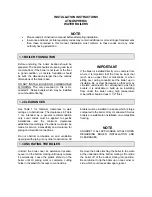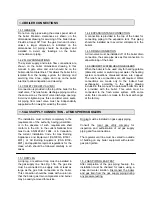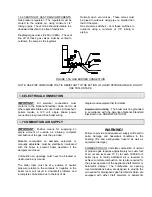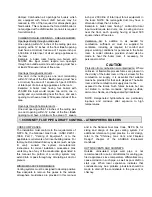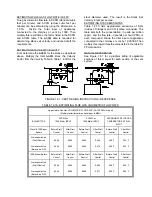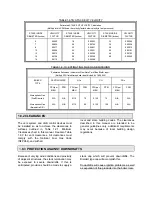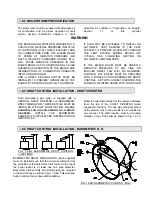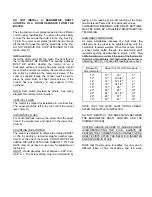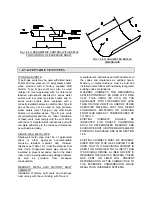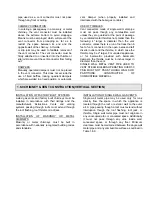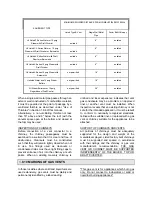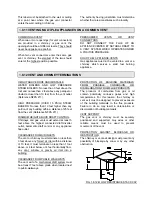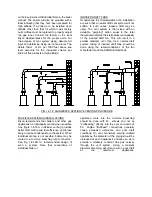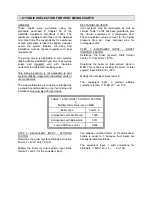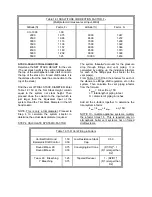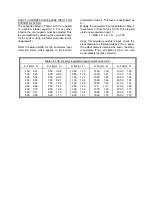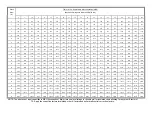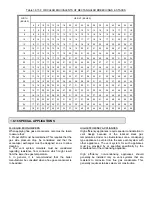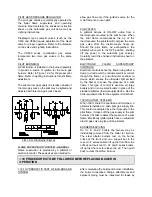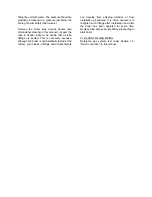
FIG. 1.8.6D: SUGGESTED BAFFLE
DIMENSIONS
Fig. 1.8.6C: BAROMETRIC CONTROL WITH BAFFLE
FOR CONTROL OF EXCESSIVE DRAFT
1.8.7 ACCEPTABLE VENT TYPES
TYPE B GAS VENTS
Type B gas vents may be used with listed water
boilers and low pressure (15 psig) steam boilers
when provided with a factory supplied draft
diverter. Type B gas vents may also be used
(subject to local approvals) with UL listed and
labelled, atmospheric gas-fired CL series water
boilers and low pressure steam boilers and K-
series water boilers when equipped with a
correctly installed barometric draft control. Type B
gas vents may not be used on high pressure
steam boilers (over 15 psig) or any other Bryan
boilers not specified above. Type B gas vents
should preferably bear the U.L. label. Installation
of these vents must comply with the vent listing,
with the vent manufacturer's instructions and with
complete adherence to the codes and clearances
as outlined previously.
SINGLE-WALL METAL PIPE
Single-wall metal pipe must be of galvanized
sheet or other approved noncombustible
corrosion resistant material, with minimum
thickness per Table 1.8.7, from the National Fuel
Gas Code. Single-wall metal pipe should be
insulated to prevent excessive heat in the boiler
room and to avoid ignition and spillage problems
as well as corrosion from excessive
condensation.
MASONRY, METAL AND FACTORY BUILT
CHIMNEYS
Installation of factory built vents and chimneys
must comply with the vent listing, with the vent
manufacturer's instructions and with adherence to
the codes and clearances as outlined herein.
Masonry or metal chimneys must be built and
installed in accordance with nationally recognized
building codes or standards.
MASONRY CHIMNEYS FOR RESIDENTIAL
APPLICATIONS MUST BE LINED WITH FIRE-
CLAY FLUE LINING (KX C315) OR THE
EQUIVALENT WITH THICKNESS NOT LESS
THAN 5/16 INCH OR WITH A LINER OF OTHER
APPROVED MATERIAL THAT WILL RESIST
CORROSION, SOFTENING OR CRACKING
FROM FLUE GASES AT TEMPERATURES UP
TO 1800 F.
EXISTING CHIMNEYS SHOULD BE
INSPECTED FOR UNSAFE CONDITIONS,
SUCH AS DETERIORATED MASONRY AND
EXCESSIVE SOOT OR OTHER BLOCKAGE OR
POTENTIAL BLOCKAGE. SEE ALSO SECTION
1.8.9.
EXISTING CHIMNEYS MUST BE PROPERLY
SIZED FOR THE FLUE GAS LOADING TO BE
USED. THAT IS, IF AN EXISTING CHIMNEY IS
USED FOR A SMALLER TOTAL INPUT THAN
ITS ORIGINAL DESIGN, A LINER OR VENT IS
REQUIRED. THE USE OF A PROPERLY SIZED
GAS VENT OR LINER WILL PREVENT
DETERIORATION OF THE CHIMNEY DUE TO
THE EXCESSIVE CONDENSATION WHICH
RESULTS ON OVERSIZED SYSTEMS.
Summary of Contents for AB Series
Page 22: ......


